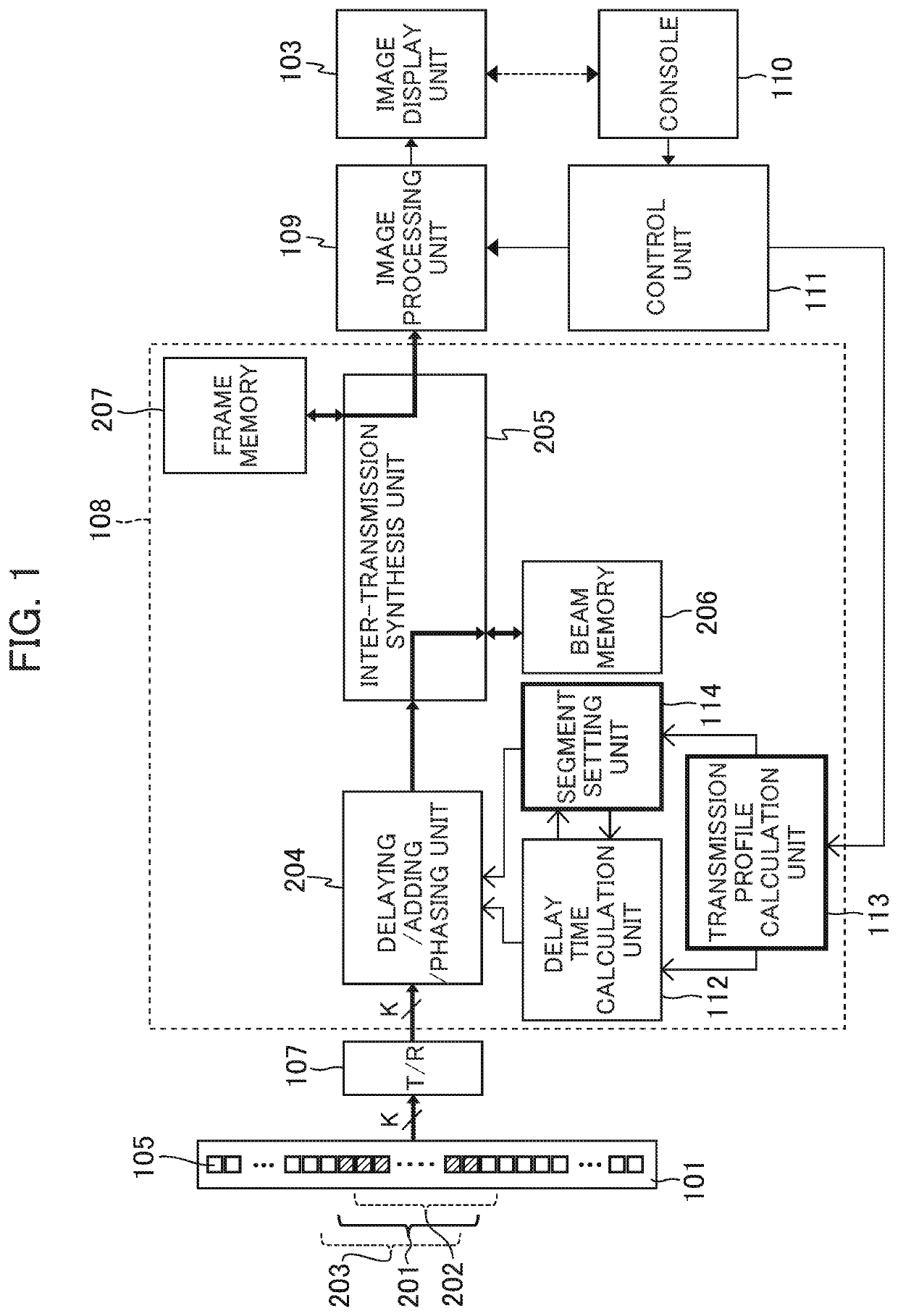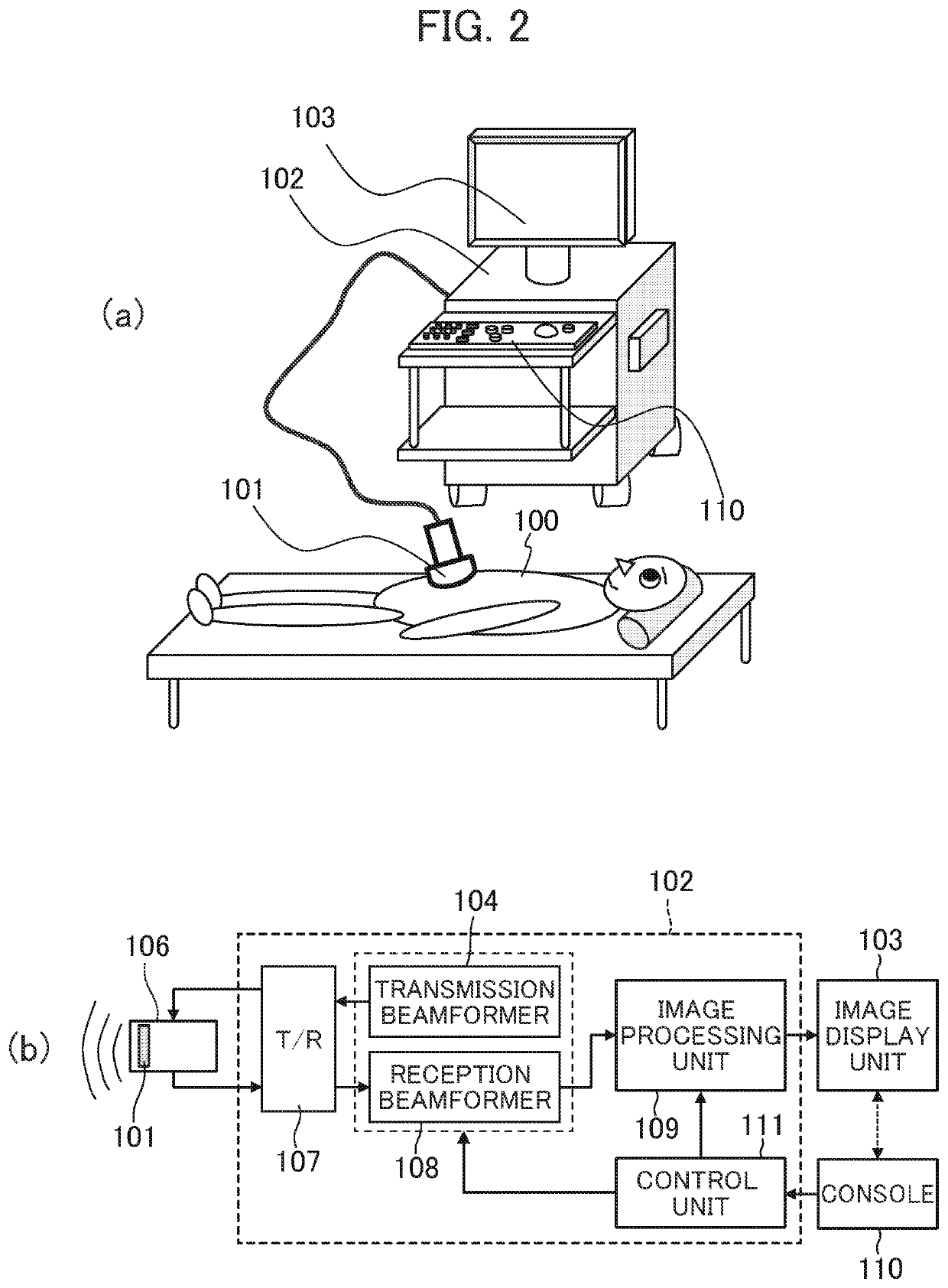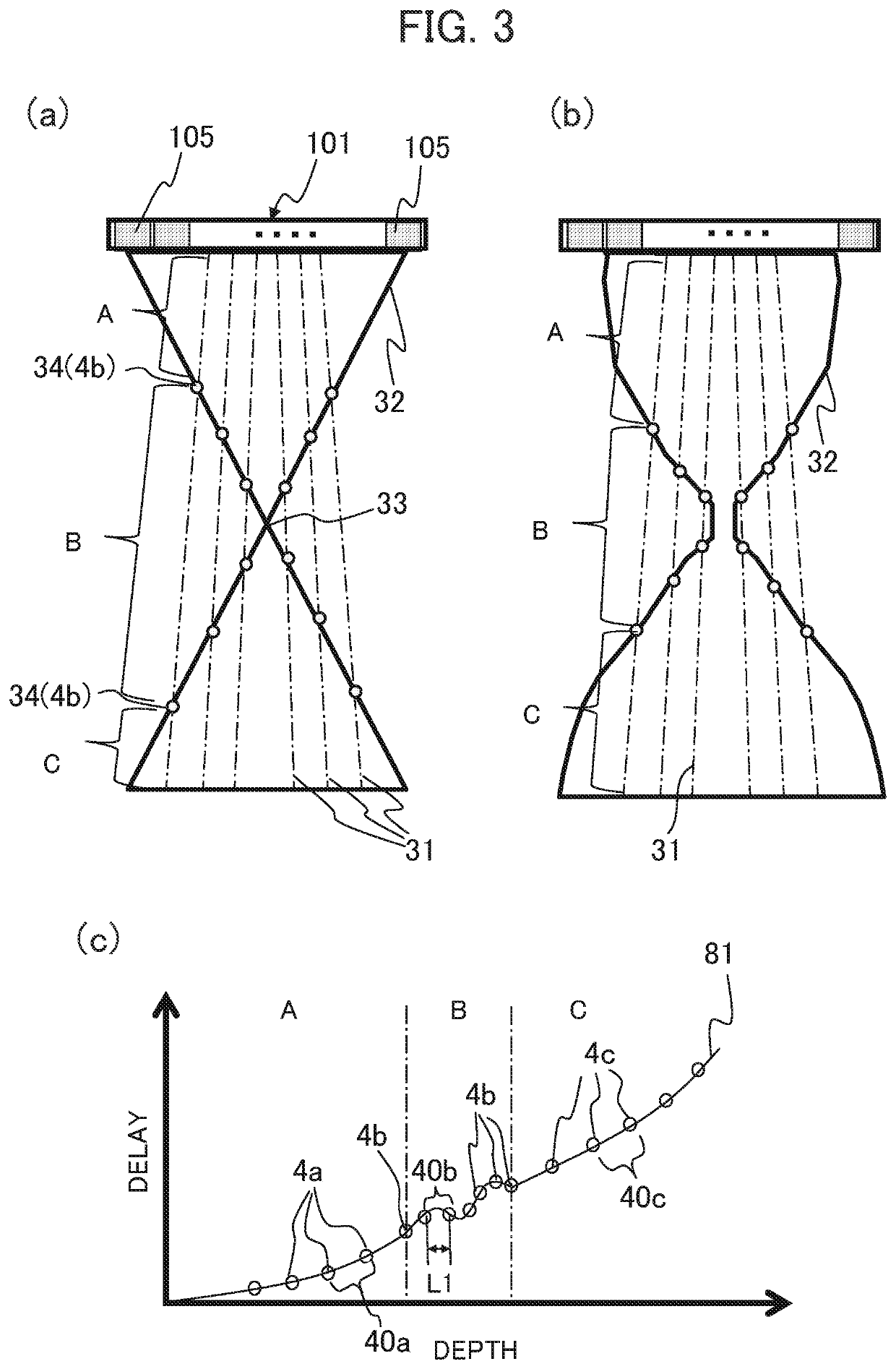Ultrasound imaging pickup apparatus
a pickup apparatus and ultrasonic technology, applied in ultrasonic/sonic/infrasonic image/data processing, instruments, applications, etc., can solve the problems of difficult to improve the resolution in the direction of an azimuthal angle, and the inability to prepare arrays of infinite length, so as to achieve the effect of deteriorating image quality in the vicinity of the depth of the transmit focus
- Summary
- Abstract
- Description
- Claims
- Application Information
AI Technical Summary
Benefits of technology
Problems solved by technology
Method used
Image
Examples
first embodiment
[0035]An ultrasound image pickup apparatus of a first embodiment will be explained with reference to FIG. 1, FIGS. 2(a) and (b). FIG. 1 is a block diagram showing a part of the apparatus, FIG. 2(a) is a perspective view of the apparatus, and FIG. 2(b) is a block diagram showing the schematic configuration of the entirety of the apparatus.
[0036]As shown in FIG. 1, FIGS. 2(a) and (b), the ultrasound image pickup apparatus of the first embodiment includes: an ultrasound element array 101 in which plural ultrasound elements 105 are arranged in a predefined direction; a transmission beamformer 104 that makes at least a part (201, 202, and 203) of the plural ultrasound elements 105 transmit a focusing-type transmission beam to the imaged area of a test object 100; a reception beamformer 108 that delays reception signals output by the plural of ultrasound elements 105, which receive ultrasound waves from the test object 100, by delay times to phase the reception signals, and adds the phase...
second embodiment
[0081]An ultrasound image pickup apparatus of a second embodiment will be explained below.
[0082]In the second embodiment, a segment setting unit 114 makes a delay time calculation unit 112 calculate a delay time for each reception phasing point 5 in an outer area B located outside of an irradiation area 32 among reception scanning lines 31. Subsequently, a curve showing the relationship between the delay times obtained by the calculation and the positions of the reception phasing points 5 is calculated. The segment length of a segment in an area where the change (gradient) of the curve is large is set short, while the segment length of a segment in an area where the change (gradient) of the curve is small is set long.
[0083]The above procedure will be concretely explained with reference to FIG. 10. A transmission profile calculation unit 113 and the segment setting unit 114 calculates intersection points 34 between a transmission profile 32 and the reception scanning lines 31 as is t...
third embodiment
[0090]An ultrasound image pickup apparatus of a third embodiment will be explained below.
[0091]In the third embodiment, a segment setting unit 114 makes a delay time calculation unit 112 calculate a delay time for each reception phasing point in an outer area B located outside of an irradiation area 32 among reception scanning lines 31. The segment setting unit 114 calculates a curve 131 showing the relationship between the obtained delay times and the positions of reception phasing points 5, and sets the nodes 4b of plural segments on the curve 131. Next, the segment setting unit 114 calculates plural line segments 132 that connect the set segment nodes 4b with straight lines. Next, the segment setting unit 114 calculates the dimensions of areas bounded by the curve 131 and the line segments 132, and adjusts the position of each of the nodes 4b of the plural segments (the segment length of each of the plural segments) respectively so that these dimensions become small.
[0092]The abo...
PUM
| Property | Measurement | Unit |
|---|---|---|
| frequencies | aaaaa | aaaaa |
| area | aaaaa | aaaaa |
| lengths | aaaaa | aaaaa |
Abstract
Description
Claims
Application Information
 Login to View More
Login to View More - R&D
- Intellectual Property
- Life Sciences
- Materials
- Tech Scout
- Unparalleled Data Quality
- Higher Quality Content
- 60% Fewer Hallucinations
Browse by: Latest US Patents, China's latest patents, Technical Efficacy Thesaurus, Application Domain, Technology Topic, Popular Technical Reports.
© 2025 PatSnap. All rights reserved.Legal|Privacy policy|Modern Slavery Act Transparency Statement|Sitemap|About US| Contact US: help@patsnap.com



